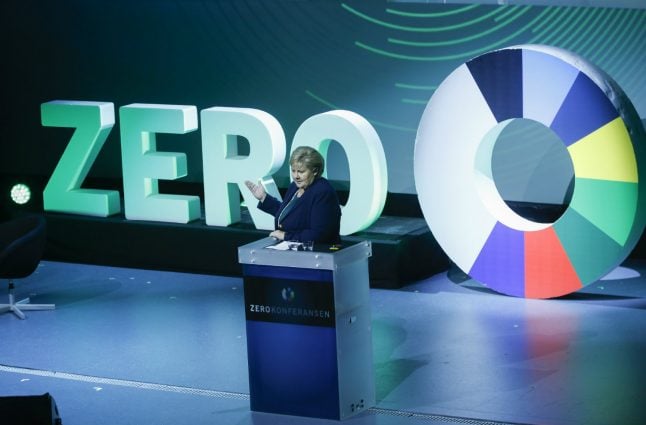Economic growth, time efficiency, cutting the costs. That’s what it’s all about, isn’t it?
Coming from Aberdeen, Scotland I am used to having the oil industry just around the corner. Looking out of my window, bulky freighters sitting on a black waterbed of slimy oil covering the view with a grey sky full of fumes. Yuck!
As an exchange student, going abroad to Norway, the green nation, seemed like a welcoming change. Nonsense! Scotland might live off the oil industry but at least people don’t pretend the contrary.
Reading articles in Norwegian newspapers, I became increasingly confused: ‘Norwegian government to spend millions removing litter from sea’, ‘Norway MPs approve 2030 carbon-neutral goal’, ‘Norway oil investments set to drop again in 2017’. I could go on. Are we really talking about the same country?
Norway likes to tell the world about its renewable energies, electro cars, green city spaces, outdoor sports, and better future. But while working towards a green image that everyone else should envy, Norway exploits our natural resources, seemingly without much second thought.
Norway’s green affluence is upheld by its sale of black gold to those less well-off, who can’t afford to invest into expensive innovations sparing our planet. Norway simply greenwashes its economy by exporting its enormous ecological footprint in form of oil and gas.
The ecological footprint of Oslo is estimated to cover an area that is 90 times larger than the area of the city itself. Despite this, the city council ignored these numbers and applied for the European Green Capital 2016. It didn’t win. Nevertheless, Norway was quite good at boasting about how Oslo was shortlisted as a finalist. Like children shouting for attention: “Look how good I am!”
Climate change is all around us. The extraction of fossil fuels leads to water pollution, reduction of air quality, potential risk of oil spills and thus a risk to the health of all living creatures. Not to forget the loss of biodiversity and destruction of aesthetics in industrial areas. Waste from ships and drilling stations contaminates seas and beaches. Fumes threaten air quality in regions that might not even profit from production elsewhere. Climate change does not know any borders. We are all affected.
Seemingly, Norway doesn’t think so.
It is not only politics pushing extraction of fossil fuels. On its website, Statoil proudly announces that oil production profits in 2017 have increased compared to the same time last year. Due to this wonderful development, both government and industry happily agreed on intensifying production with J. Sverdrup oil in 2019. Also, they’ve only just celebrated the delivery of 5 billion barrels of oil since 1979 from Statfjord. They must have had a great time congratulating themselves on the further destruction of our planet.
READ ALSO: 'We produce too many oil engineers’: Norwegian engineering student rep
But hold on! Didn’t, a few months earlier, states all over the world – Norway included-celebrate the Paris goals for a sustainable future promoting renewable energies, fair resource distribution and reduction of greenhouse gas emissions?
If we wanted to act per these Paris goals and keep global warming below 1.5°C, 85% of fossil fuels are not burnable.
Norway seems to know a solution. Extract more oil. Thus, create jobs ensuring national well-being. Then, export the oil to make sure your own hands don’t get dirty. Increased profits from export can be used to invest into renewable energies and the latest technologies. These, of course, stay in Norway to lift the green image and reduce the local ecological footprint.
Everyone knows about the good intentions of the Paris agreement. But does everyone know about TISA? Public surveys say no. The new Trade in Services Agreement stays largely behind closed doors. Norway and other countries are in the process of arranging even more trade with less governmental interventions and regulations. This would support liberalisation of markets to please oil interests. The contract doesn’t distinguish between renewable and non-renewable resources, which makes it hard to justify the more expensive production and integration of sustainable energy sources. Clearly, the oil agenda seems to become more important than green policies.
The hypocritical ambiguity of Norwegian politics and economics only spreads confusion. The population bathes itself in the bright light of innocence, while capitalism and power games encourage the people on top to invest into harmful resource extraction and destructive exploitation of our sea grounds.
But in the end, greenwashing a black identity will not save anyone. Neither will a Green Capital award. These accomplishments will not feed us if our oceans are polluted. They won’t give us clean air to breath.
Norway should not claim a green identity if its economy is based on oil extraction and export. Instead of selling fossil fuels to other nations, we should start to share technologies, knowledge, and innovative research. If we would only shift the energy we put into intensifying outdated, outworn practices towards mobilising existing solutions we could keep climate change to a minimum.
The fact that Norway doesn’t, but rather invests further into oil and gas production leaves me doubtful about the motives of those ruling the country. I hope they are more than just machines, calculating profit, efficiency, and short term trends in the interest of the rich.
.jpg)
Lina Brammertz is an undergraduate student at the University of Aberdeen, Scotland. She is currently participating in an exchange program in Social-Environmental studies at the University of Oslo. Lina is part of the local committee of Spire, a youth-activist group engaging for sustainable development, urban farming and zero-waste. She can be contacted at [email protected].



 Please whitelist us to continue reading.
Please whitelist us to continue reading.